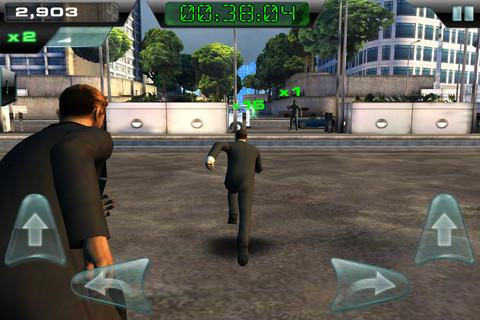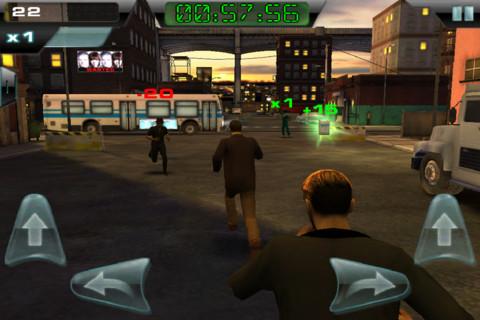- Wondering how to get Monopoly GO! free rolls? Well, you’ve come to the right place. In this guide, we provide you with a bunch of tips and tricks to get some free rolls for the hit new mobile game. We’ll …
Best Roblox Horror Games to Play Right Now – Updated Weekly
By Adele Wilson
Our Best Roblox Horror Games guide features the scariest and most creative experiences to play right now on the platform!The BEST Roblox Games of The Week – Games You Need To Play!
By Sho Roberts
Our feature shares our pick for the Best Roblox Games of the week! With our feature, we guarantee you'll find something new to play!All Grades in Type Soul – Each Race Explained
By Adele Wilson
Our All Grades in Type Soul guide lists every grade in the game for all races, including how to increase your grade quickly!
In Time Review
Hollywood needs to either stop making tie-in games for its movies, or it needs to step things up. A lot. There are a lot of great films that get crummy-to-mediocre adaptations, designed to nab as much money as possible with a minimal amount of effort. The latest example of this is In Time for the iPhone, which is so mediocre that it almost feels remarkable.

In Time isn’t a bad way to kill a few minutes, but it’s not worth any more of a time investment
Hollywood needs to either stop making tie-in games for its movies, or it needs to step things up. A lot. There are a lot of great films that get crummy-to-mediocre adaptations, designed to nab as much money as possible with a minimal amount of effort. The latest example of this is In Time for the iPhone, which is so mediocre that it almost feels remarkable.
In Time is based on the sci-fi action flick starring Justin Timberlake. You control Timberlake’s character Will Salas as he runs through a world where time is literally money. You control his path as he sprints across fairly linear levels, avoiding the corrupt law enforcement of the Timekeepers and criminal Minutemen. As you run, a timer counts down towards zero; you can extend the time limit by picking up time capsules or delivering a few seconds to bystanders who are in need of a little spare time (which awards you a score multiplier).

Gameplay relies on the tilt-sensing technology of the iPhone. Will runs automatically, and tilting the phone right or left will steer him accordingly. There are also buttons that appear on the screen, designed to make him dodge right and left, as well as vault over obstacles. The controls work really nicely, actually; they’re easy to use and perform reliably the entire time.
Occasionally, the game tries to shake things up by presenting active dangers. Timekeepers and/or Minutemen will show up and try to stop you (in the case of the former) or reduce your time limit and remove your score multiplier granted by the civilians you’ve rescued (the latter).
Those citizens represent a huge plot hole: why are these random people just hanging around old factories and scummy neighborhoods, hoping a stranger will bestow some precious time upon them? That’s never really explained. Nor does the game answer why a measly ten seconds will make a difference for all these chrono-beggars. Let’s be honest: nobody is expecting world-class writing, but stuff like this is just lazy.
Visually the game looks fine, but it’s also kind of bland. There’s a lot of brown and grey on display here, and it’s tough to tell any real difference between, say, the factory level and the Dayton level. On top of that, things are dark enough that it’s impossible to make out a lot of details unless your phone’s brightness is turned up to its higher levels. As a result, it’s not uncommon to run into a barricade that’s sitting in the shadows, meaning you’ll get stuck and then be captured by a Timekeeper, which then requires you to start the level over again.

On a side note, every few minutes, the game seems to randomly try to take you to the movie’s official website or its Facebook page, which starts to get kind of obnoxious after a while.
The best way to describe In Time on the iPhone is that it’s like using a treadmill after being a trail runner. It’s decent and serviceable, but it’s nothing memorable, and there are a lot more enjoyable alternatives out there.

The good

The bad
More articles...
Monopoly GO! Free Rolls – Links For Free Dice
By Glen Fox
Wondering how to get Monopoly GO! free rolls? Well, you’ve come to the right place. In this guide, we provide you with a bunch of tips and tricks to get some free rolls for the hit new mobile game. We’ll …Best Roblox Horror Games to Play Right Now – Updated Weekly
By Adele Wilson
Our Best Roblox Horror Games guide features the scariest and most creative experiences to play right now on the platform!The BEST Roblox Games of The Week – Games You Need To Play!
By Sho Roberts
Our feature shares our pick for the Best Roblox Games of the week! With our feature, we guarantee you'll find something new to play!All Grades in Type Soul – Each Race Explained
By Adele Wilson
Our All Grades in Type Soul guide lists every grade in the game for all races, including how to increase your grade quickly!







